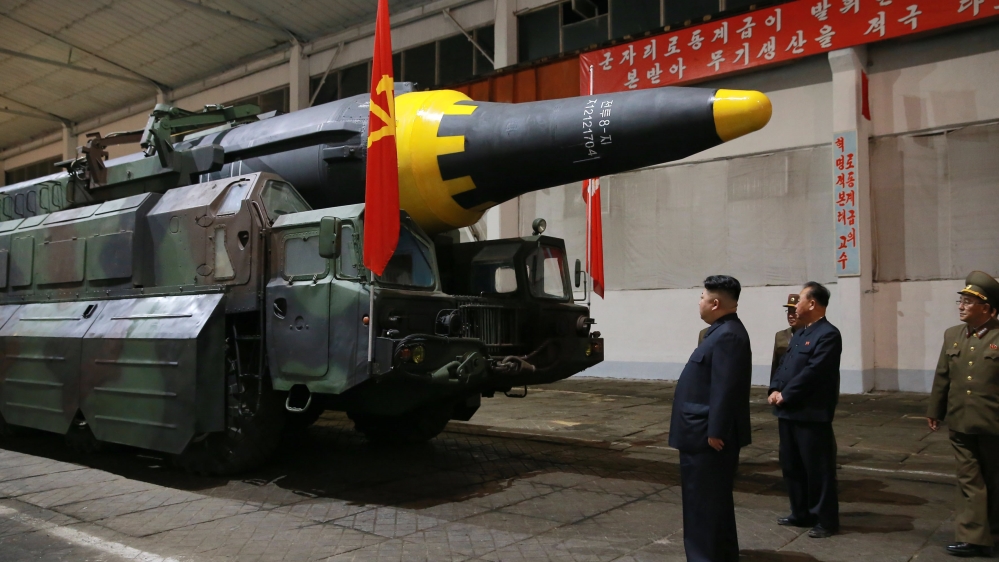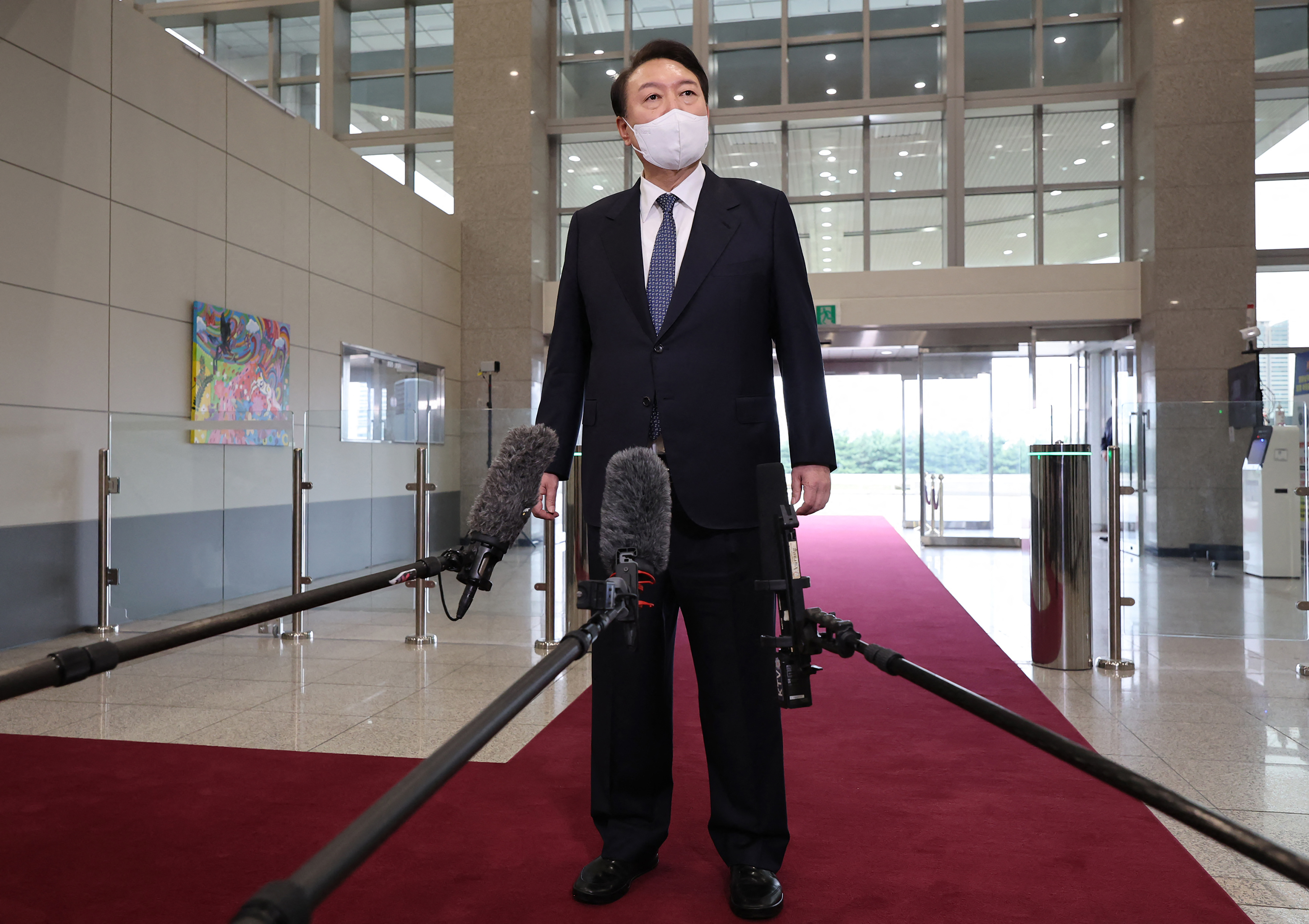
North Korea has fired a ballistic missile over Japan, the fifth launch in 10 days, amid expectations that it is gearing up to test its first nuclear weapon in five years.
The missile, detected by the Japanese coast guard and South Korea’s Joint Chiefs of Staff, prompted warning sirens in northern Japan with residents advised to take shelter. Train services in the northeastern Hokkaido and Aomori regions were suspended temporarily.
It was the first North Korean missile to fly over or past Japan since 2017, and Japanese Prime Minister Fumio Kishida condemned what he called a “barbaric” act.
South Korean President Yoon Suk-yeol, meanwhile, warned of a resolute response following the launch, according to a statement from the presidential office.
Both leaders convened emergency meetings of their respective national security councils.
“(The NSC) made it clear that continued North Korean provocations cannot be tolerated and that there would be a price to be paid,” the statement from Yoon’s office said, adding that Seoul would seek various deterrence measures against North Korea, including strengthening sanctions.
Officials in Tokyo and Seoul said the missile flew between 4,500 to 4,600km (2,800-2,850 miles) to a maximum altitude of about 1,000km (620 miles). Launched from the north of the country near the border with China, the weapon was in the air for about 22 minutes before falling into the Pacific Ocean.

While Tokyo said it had taken no steps to shoot the missile down, Defence Minister Yasukazu Hamada said it had not ruled out any options, including counterattack capabilities.
“North Korea’s series of actions, including its repeated ballistic missile launches, threatens the peace and security of Japan, the region, and the international community, and poses a serious challenge to the entire international community, including Japan,” top government spokesperson Hirokazu Matsuno, told a news conference.
The United States said National Security Adviser Jake Sullivan and Secretary of State Antony Blinken had held calls with their counterparts in South Korea and Japan and that it strongly condemned the “dangerous and reckless” decision to send a missile over Japan.
“This action is destabilizing and shows the DPRK’s blatant disregard for United Nations Security Council resolutions and international safety norms,” National Security Council spokesperson Adrienne Watson said in a statement, using the initials for North Korea’s official name.
Blinken reassured Seoul and Tokyo that the US commitment to their defence remained “ironclad”.
Precision strike drill
In response to the launch, eight US and South Korean warplanes practised bombing a target in the Yellow Sea later on Tuesday.
South Korea’s military said that it mobilised four F-15K fighter jets and dropped a pair of guided bombs on a target off its west coast, in what it called a demonstration of precision strike capability against the source of North Korean provocations.
The US sent four F-16 fighter jets to participate in the drills.
That’s a Hwasong-12 IRBM. A longer-range shot than in August or September 2017. https://t.co/ouoFwgNLnM
— Ankit Panda (@nktpnd) October 4, 2022
The launch was from Muphyong-ri, Jagang province, according to NHK TV quoting South Korean government. NK launched a Hwasong-12 missile from the same location on January 30 this year. NK media said that launch was to “verify its accuracy.” Here’s one of the images from the time pic.twitter.com/GzQgWmXvsI
— Martyn Williams (@martyn_williams) October 3, 2022
Pyongyang has conducted a series of recent launches around military drills held by the United States and South Korea, which it considers a rehearsal for invasion. The US and South Korea, which staged its own show of advanced weaponry on Saturday to mark its Armed Forces Day, say the exercises are defensive in nature.
Leif-Eric Easley, a professor at Ewha University in Seoul, said that firing a weapon over Japan represented a “significant escalation” of recent provocations.
“Diplomacy isn’t dead, but talks aren’t about to resume either,” Easley said in comments by email. “Pyongyang is still in the middle of a provocation and testing cycle and is likely waiting until after China’s mid-October Communist Party Congress to conduct an even more significant test.”
While the most recent tests were of short-range missiles, Pyongyang has conducted a record number of weapons tests this year including what it said was an ICBM, which is banned under UN sanctions.
Some analysts say North Korean leader Kim Jong Un, who is committed to modernising the military, aims to use his enlarged arsenal to pressure Washington to accept his country as a nuclear state.
The top US diplomat for East Asia, speaking at an online event hosted by the Institute for Korean-American Studies, said the latest launch was “unfortunate”, but a path to dialogue remained open.
“[We] urge the DPRK to take the path of dialogue, commit to serious and sustained diplomacy, and refrain from further destabilizing activities,” said Daniel Kritenbrink, the State Department’s assistant secretary for East Asian and Pacific affairs.
Officials in South Korea have suggested North Korea might carry out a nuclear test after the end of the Congress in China and before the US holds its mid-term elections in November. Pyongyang last carried out a nuclear test in September 2017.







